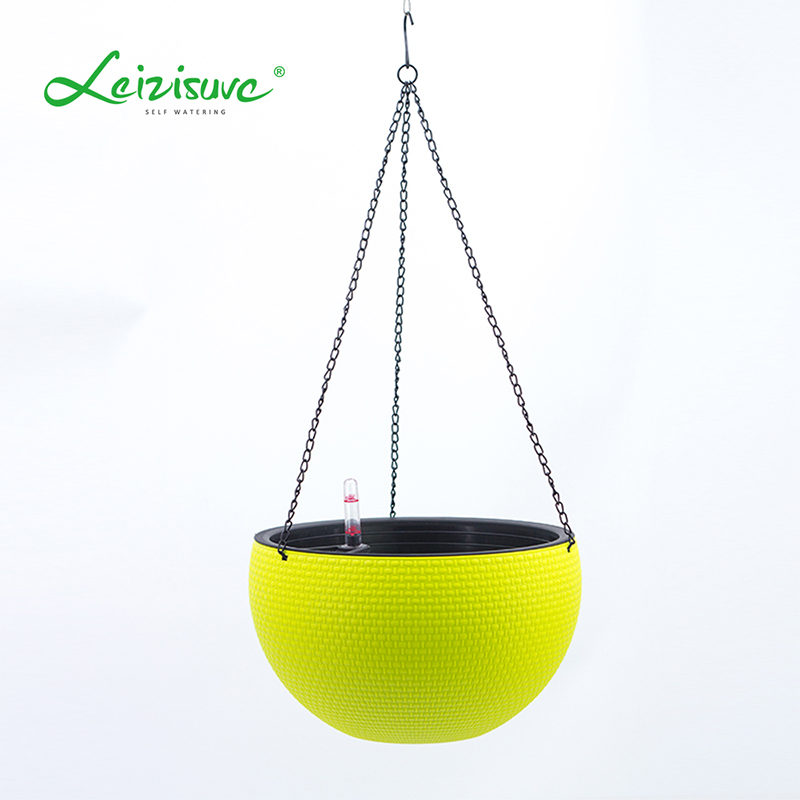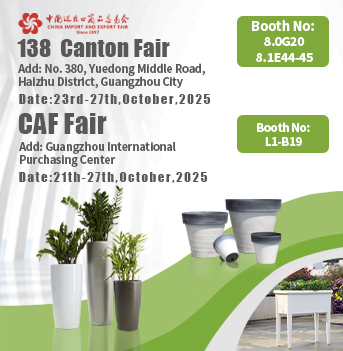As more gardeners and commercial growers look for ways to reduce their environmental impact, the demand for sustainable Garden Pots Planters and Nursery Planter Pots has continued to expand. From home gardening enthusiasts to wholesale distributors, choosing containers that balance practicality with environmental responsibility is becoming a significant part of procurement decisions. Exploring material options, production methods, and long-term use strategies can help businesses and individuals align their practices with broader sustainability goals.

Materials That Support Sustainable Practices
One of the more direct ways to make gardening more eco-friendly is through the selection of materials. Many modern planters are produced using plastics that include recycled content or can be recycled after use. Incorporating recycled materials reduces the demand for virgin plastic and supports a more circular use of resources.
Some planters are designed to be biodegradable over time under the right conditions. While these products may not suit all applications, they can be appropriate for certain types of seasonal planting or short-term propagation. When considering biodegradable options, it is important to understand how they will respond to moisture, heat, and handling so that they maintain structural stability during the growing cycle.
UV stabilizers are another practical feature in sustainable Nursery Planter Pots. By protecting the material from sunlight damage, UV additives help extend the useful life of each container, which can reduce the frequency of replacement and lower total material consumption over multiple seasons.
Supporting Plant Health With Thoughtful Design
Sustainability also involves supporting plant growth in ways that reduce waste and resource use. Drainage features are essential in this regard. Containers with consistent drainage holes or slots help prevent waterlogging, which can damage root systems and cause plant loss. Healthier plants grow more predictably and require fewer interventions, helping to avoid wasted water, soil amendments, or energy inputs.
Some planters are shaped to promote air circulation around the roots or to encourage stronger root development. For example, tapered walls or raised bottoms can improve air exchange and drainage efficiency. These design details can help plants establish more quickly, which supports higher survival rates after transplanting.
Stackable shapes and uniform dimensions are also valuable for sustainable operations. By making storage and transport more efficient, these features help reduce space requirements and the environmental footprint of distribution.
Flexible Size and Bulk Options
Choosing sustainable pots doesn’t mean compromising on size variety or capacity. Pots are available in a variety of diameters and depths using recycled or partially recycled materials. From small seedling containers to large decorative pots, businesses can choose the right product for their crop and display needs.
Bulk purchasing can further promote sustainability by reducing the frequency of shipments, thereby reducing transportation-related emissions. When ordering pots in bulk, they can be packed more efficiently, reducing wasted space and packaging materials.
Many suppliers offer flexible order volume requirements for businesses with fluctuating inventory needs.This allows nurseries and retailers to adjust to seasonal needs and avoid excess inventory or unnecessary warehousing costs.
Customized Branding and Clarity
Environmentally friendly gardening is not only about materials, but also about communication and customer education. Customized labeling and branding can help retailers share information about the sustainability of their products. Labels can include care instructions, recycling guides, or certifications related to recycled materials used in production.
Embossed logos, color variations, and information labels are all customization options. These details can strengthen the connection between growers or retailers and consumers, helping to build trust and encourage them to make environmentally friendly choices.
When planning custom orders, it’s helpful to share specific details about the intended use, required material composition, and timing. Advance coordination helps ensure a smooth process from mold development to production and delivery.
Long-term considerations for sustainable operations
Adopting sustainable nursery and garden pots can also support broader business goals. Over time, using durable containers that can withstand multiple growing cycles can reduce the costs associated with frequent replacement. For commercial growers, having pots that are consistent in size and shape from season to season helps maintain efficient workflows and predictable results.
For growers who recycle or reuse old pots, durable construction is critical to ensure that the containers can be cleaned and reused without compromising structural performance. This helps reduce overall material consumption and supports a more circular approach to gardening.
Many nurseries also integrate sustainability into their marketing and customer interactions. By providing clear information about pot composition and recyclability, companies can position themselves as thoughtful, environmentally conscious partners in the horticultural supply chain.
Whether you are expanding a commercial nursery or operating a retail garden centre, choosing pots that reflect your commitment to sustainability can have significant long-term benefits. By paying attention to materials, design and supply chain considerations, you can create a growing system that respects the environment while supporting healthy plant growth and efficient operations.

 English
English 日本語
日本語 Español
Español Deutsch
Deutsch عربى
عربى

